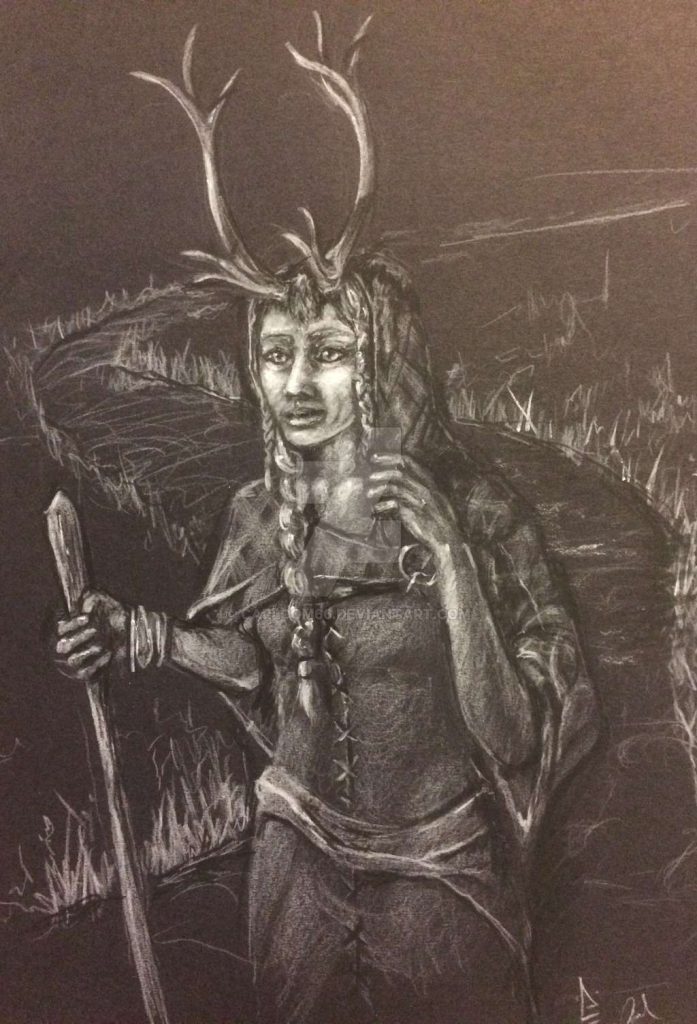Elen of the Ways is probably the most ancient female Goddess that we have on the mainland Britain today. It is believed that she dates back to the Paleolithic (Old Stone Age).
To our ancestors of the Paleolithic & Mesolithic (Middle Stone Age) era, deer were an exceptionally important part of their lives. They relied on them for food and made tools & weapons from their bones. They used their skins not only for clothing but also in the construction of shelters, all parts of the animal would have had a use.
The herds of deer would also guide them in seasonal migrations, leading them to areas where food was more plentiful. Living the same lifestyle that the Saami peoples who are deer herders do today. As in the Saami culture of today the deer would also have been highly revered. And would have given the peoples their spiritual connection and Deities.
Doggerland
At the end of the last ice age, Britain formed the northwest corner of an icy continent. Warming climate exposed a vast continental shelf for humans to inhabit, known as Doggerland. It made it possible to walk from Norway, across what is now Denmark to the Eastern side of Britain.
It is more than feasible for our ancestors to have crossed the expanse of Doggerland, as the ice melted and exposed more hospitable living conditions. Bringing with them their reverence for the herds and maybe even parts of their language. In the original northern Saami dialect the word for a reindeer herd is ‘eallun’, pronounced Elun (https://www.laits.utexas.edu/sami/diehtu/siida/reindeer/glossary.htm)
Did our ancestors bring their precious herd with them in spirit and the name – Elen?
Archaeological finds from the mesolithic site at Star Carr in N. Yorkshire demonstrate the close connection during this period with the deer. The finds are also indicators of the animistic and shamanistic views and beliefs of our ancestors (see more below).
Animism & Shamanism are ways that have come down the millennia and are still with us today.
You can find out more on our page Animism/Shamanism
Elen of the Ways – A Goddess – Video
GDPR Compliant
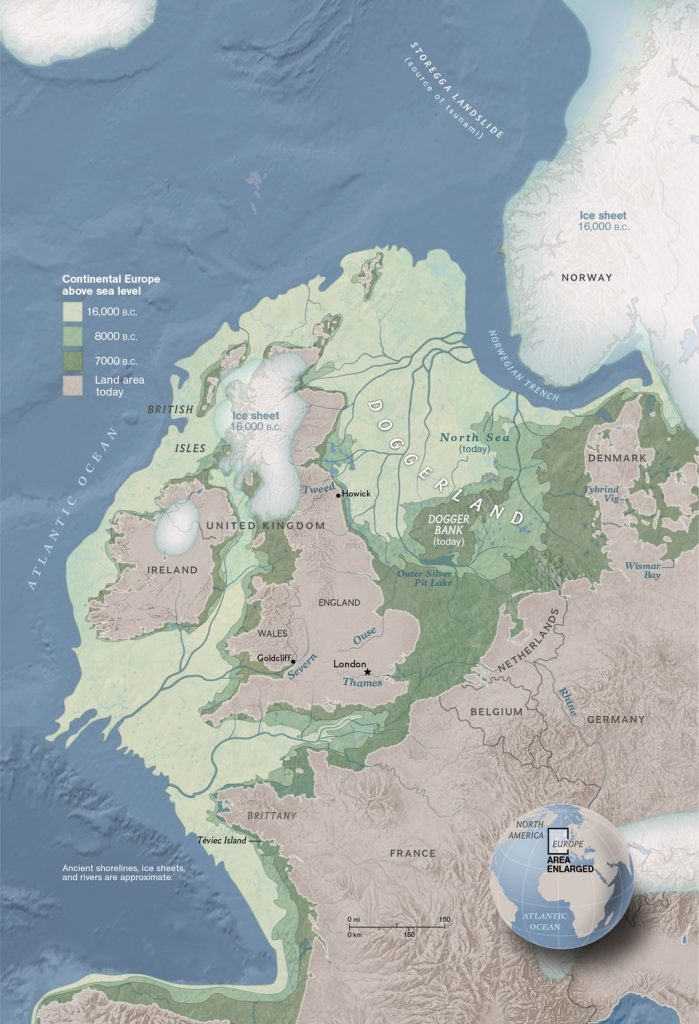
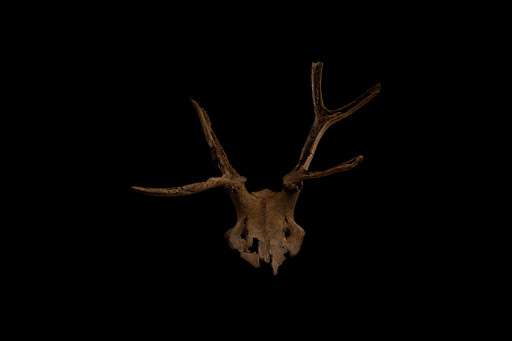
Star Carr
One of the most important archaeological digs in the UK. Dating back to the 9,000 BC – the Mesolithic (middle stone age). Finds included over 21 Antler-Frontlets. An Antler-Frontlet is an artefact which aids the corporeal transformation of a human body into that of a deer.
This dig provided some of the most tangible evidence that we have of our ancestors Animistic/Shamanistic practices. And the importance of the deer in their spiritual cosmology.
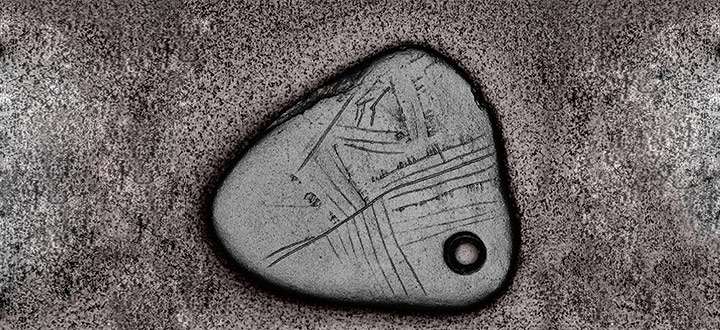
Elen of the Ways – A Goddess in our Landscape
The name Elen is the Welsh form of Helen, other variants in the English language are Ellen, Helena and Hellen. Places with any of those variants are likely to connect to Elen of the ways, especially if roads, pathways or tracks are involved.
- St Helens – Takes its name from a chapel, which was first mentioned in 1552. It was built where the road from Ormskirk to Warrington crossed the road from Prescot to Ashton.
- Helensburgh (Argyll & Bute) – Scots: Eelansburgh – the site of a Roman road, also with evidence of prehistoric occupation with glacial boulders decorated with Bronze Age cup marks.
- Sarn Helen – Sarn Helen is the name for a network of nearly 2,000-year-old (and some much older) roads that linked Roman fortifications across Wales. The Welsh word “Sarn” means “Causeway” (paved road). According to Myth & Legend the ‘Helen’ refers to Elen Luyddog, the Welsh wife of Magnus Maximus. A real-life, fourth-century Roman emperor who moved to Wales to marry her.
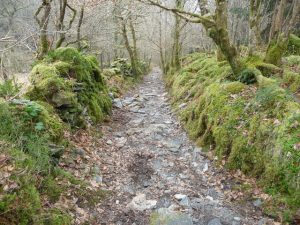
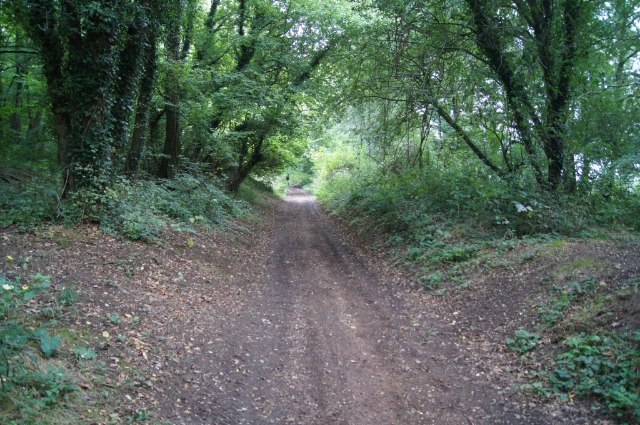
- But were these Myths told to put a story to an already existing trackway? A trackway dating back to Elen of the Ways? Archaeologists and historians have finally ‘discovered’ that Roman roads were built over already existing, far more ancient ways. The clue is normally in the sheer number of prehistoric remains along their routes. The numerous megalithic sited dotted along Sarn Helen were constructed thousands of years before the Romans arrived.
A Migratory Route
- Harrow Way (Wessex) – HJ Massingham wrote in ‘Downland Man‘ that “it is probably the oldest route in the country. In continuous use for ten millennia. Cornwall to Kent. A migratory route for reindeer. The first people didn’t know where they were going, would have been attracted by any clear path. The taste of meat.” If that is correct then the chances are that this would be another of ‘Elen’s Ways’.
Wild Spirituality
Receive our articles on Wild Spirituality for FREE
A Wild Spirituality that connects Landscape, Ancestors, Story & Soul. All in existence is Sacred.
Use the sign-up below (select the ‘NONE [free] on the subscribe page)

